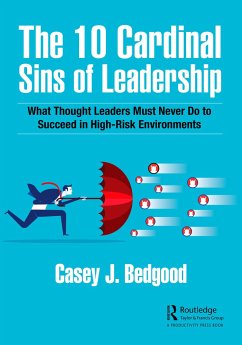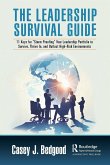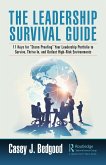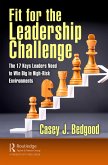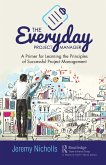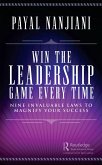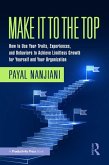Why do some leaders succeed and others fail? Is there a magic ingredient that the leaders must consider in their career journey to ensure the joy ride does not turn into a nightmare? What is the key to maximizing leaders' success in ways that are sustainable long term?
The purpose of this book is to provide a simple road map for leaders, aspiring leaders, students, and anyone interested in the art of leadership to succeed in high-risk environments. Often, leaders don't know what they don't know. One main culprit is the lack of assessing, measuring, analyzing, and addressing risk. Simply put, we don't know what we don't measure. What is not known can and will eventually harm leaders, organizations, and their customers.
Change is the new normal and only constant. As change grows, so does risk. Risk can be a friend or foe to thought leaders. It all depends on perspective, insight, and knowledge. Ignorance is never bliss, and leaders must leverage knowledge to mitigate risks at every turn.
In The 10 Cardinal Sins of Leadership: What Thought Leaders Must Never Do to Succeed in High-Risk Environments, readers will learn:
How to identify, measure, analyze, and address various types of risk
How to determine if risk is a friend or a foe
Strategic planning concepts that will allow leaders to magnify, plan for, leverage, and marginalize risks long term
Methods to ensure that inclusion efforts do not become overly exclusive, thus excluding key stakeholders and creating new levels of organizational risk
Techniques for looking back at organizational yesteryears to create a high-performing journey map for the road ahead
The value of perspective - how we view things determines how we respond or wait to be disrupted unknowingly
The purpose of this book is to provide a simple road map for leaders, aspiring leaders, students, and anyone interested in the art of leadership to succeed in high-risk environments. Often, leaders don't know what they don't know. One main culprit is the lack of assessing, measuring, analyzing, and addressing risk. Simply put, we don't know what we don't measure. What is not known can and will eventually harm leaders, organizations, and their customers.
Change is the new normal and only constant. As change grows, so does risk. Risk can be a friend or foe to thought leaders. It all depends on perspective, insight, and knowledge. Ignorance is never bliss, and leaders must leverage knowledge to mitigate risks at every turn.
In The 10 Cardinal Sins of Leadership: What Thought Leaders Must Never Do to Succeed in High-Risk Environments, readers will learn:
How to identify, measure, analyze, and address various types of risk
How to determine if risk is a friend or a foe
Strategic planning concepts that will allow leaders to magnify, plan for, leverage, and marginalize risks long term
Methods to ensure that inclusion efforts do not become overly exclusive, thus excluding key stakeholders and creating new levels of organizational risk
Techniques for looking back at organizational yesteryears to create a high-performing journey map for the road ahead
The value of perspective - how we view things determines how we respond or wait to be disrupted unknowingly

